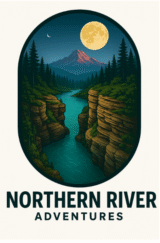Nestled in the heart of the Canadian Rockies, Banff National Park is not just Canada’s oldest national park — it’s one of the most breathtaking places on Earth. With its iconic turquoise lakes, glacier-clad peaks, and charming alpine towns, Banff offers an unforgettable blend of adventure, serenity, and wonder. Whether you’re setting up camp beneath the stars or trekking into backcountry trails, this guide covers everything you need to know to explore Banff the right way — with respect for nature, and a hunger for discovery.
📚 Quick Facts About Banff National Park
- 📍 Location: Alberta, Canada
- 🏞️ Founded: 1885 – First National Park in Canada
- ⛰️ Size: 6,641 km² (2,564 sq mi)
- 🏕️ UNESCO World Heritage Site since 1984
- 🐾 Known For: Lake Louise, Moraine Lake, wildlife, Icefields Parkway
- 💵 Entry Fee: $10.50 CAD per adult/day (or Parks Canada Discovery Pass)
- ☀️ Best Time to Visit: June–September (hiking); December–March (skiing/snow sports)
🛶 A Bit of History: From Healing Springs to Heritage Park
Before Banff became a beloved national treasure, it was — and still is — a sacred land for Indigenous Peoples. The Stoney Nakoda, Ktunaxa, Tsuut’ina, and Blackfoot nations have long inhabited and respected these lands. They traveled the valleys, fished the rivers, and held deep spiritual connections to the towering mountains and mineral-rich springs.
The story of modern Banff began in 1883, when three Canadian Pacific Railway (CPR) workers discovered a cluster of natural hot springs on Sulphur Mountain. Word of the healing waters spread quickly, and soon, entrepreneurs, travelers, and health seekers flocked to the region. The government saw both a tourism opportunity and a need to preserve the area. By 1885, the region was designated a federal reserve — officially becoming Canada’s first national park and only the third in the world, after Yellowstone and Royal National Park in Australia.
The CPR capitalized on the newfound interest by building grand hotels like the Banff Springs Hotel, designed to rival European alpine resorts. These luxury destinations were marketed across Europe and North America, drawing the elite to experience Canada’s “wilderness.” Ironically, this surge in popularity also led to environmental stress and displacements of Indigenous communities.
Over time, the park grew in size and significance. Roads were built, lakes mapped, and railways extended, opening the park to a broader audience. Today, Banff National Park is part of the Canadian Rocky Mountain Parks UNESCO World Heritage Site — recognized for its striking natural beauty and historical significance.
The name “Banff” itself comes from Banffshire in Scotland, chosen by CPR executives to honor their hometown. Despite its European moniker, the true essence of Banff lies in its First Nations roots, glacial history, and the commitment of millions of visitors to preserving its wonders for future generations.
Today, Banff serves as a symbol of conservation, history, and accessibility. It balances natural wonder with tourist infrastructure — making it possible to explore remote lakes and trails by day and enjoy warm hospitality and fine dining by night. As we walk its paths, paddle its lakes, or soak in its hot springs, we are walking through the layers of centuries of stories — both Indigenous and colonial, natural and human-made.
🥾 Must-Do Hikes in Banff
Banff is home to some of the most iconic hikes in North America. Here are six you should not miss — each offering a unique slice of the Rockies:
1. Plain of Six Glaciers Trail
- 📏 13 km (8.1 miles) round-trip
- 🗻 Glacial views, high-alpine terrain, and a historic teahouse at the end
- 🍰 Don’t miss the scones at the Plain of Six Glaciers Teahouse!
2. Johnston Canyon to Ink Pots
- 👣 Easy-to-moderate; 11.7 km (7.3 miles)
- 🌊 Boardwalks lead to waterfalls, followed by peaceful meadows with spring-fed pools
- 📸 Ideal for families and photographers alike
3. Lake Agnes Tea House Trail
- 🧗 Moderate; 7 km (4.4 miles)
- 🏞️ Switchbacks with constant elevation gain, but worth it for the lake and tea house
- 🫖 Sip herbal tea on a deck overlooking a glacial lake
4. Sulphur Mountain Trail
- 🥾 10 km (6.2 miles) round-trip
- 🏔️ Rewarding summit with a boardwalk, 360° views, and the historic Sanson’s Peak Weather Station
- 🚡 Or skip the hike and ride the Banff Gondola!
5. Sunshine Meadows
- 🌸 Famous for alpine wildflowers in late July
- 🚶 Gentle trails with insane views of Mt. Assiniboine
- 🎟️ Access by shuttle or gondola from Sunshine Village
6. C-Level Cirque
- ⛰️ Less trafficked hike with views of Lake Minnewanka
- 🧱 Pass old mine shafts and end in a breathtaking glacial bowl
- 🐻 Wildlife sightings are common — carry bear spray!
📸 Top Sights You Can’t Miss in Banff
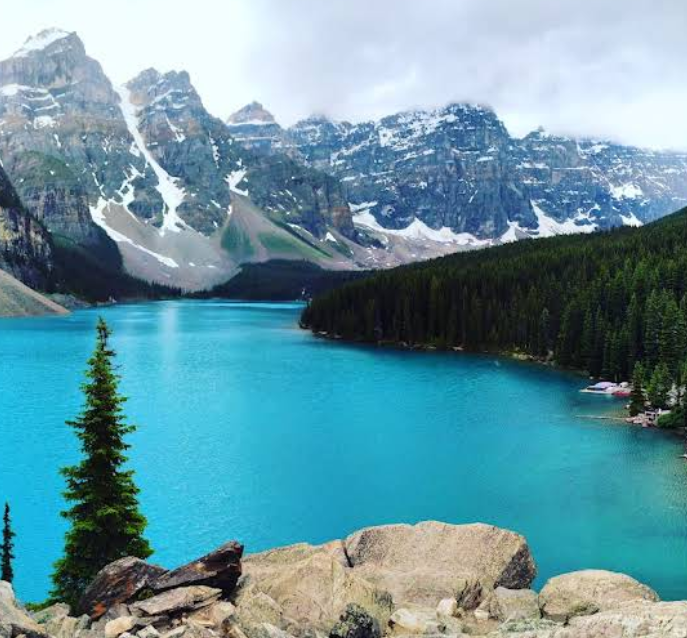
🏞️ Lake Louise
With its vibrant turquoise water backed by towering peaks and the Victoria Glacier, Lake Louise is perhaps the most famous lake in Canada. Paddle across the water in a bright red canoe, take an afternoon tea break at the nearby Fairmont Chateau, or begin your trek up the Plain of Six Glaciers or Lake Agnes trails. In winter, the lake transforms into a skating rink with a castle carved from ice.
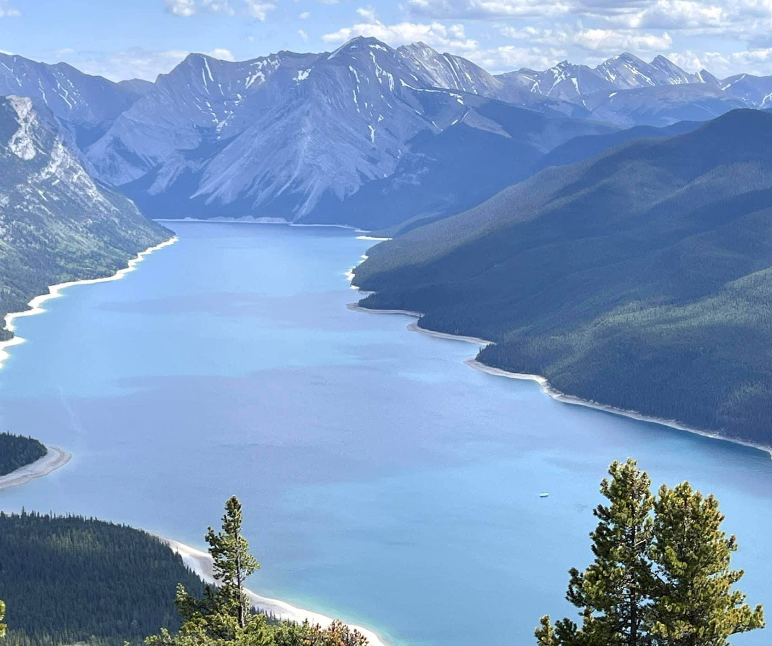
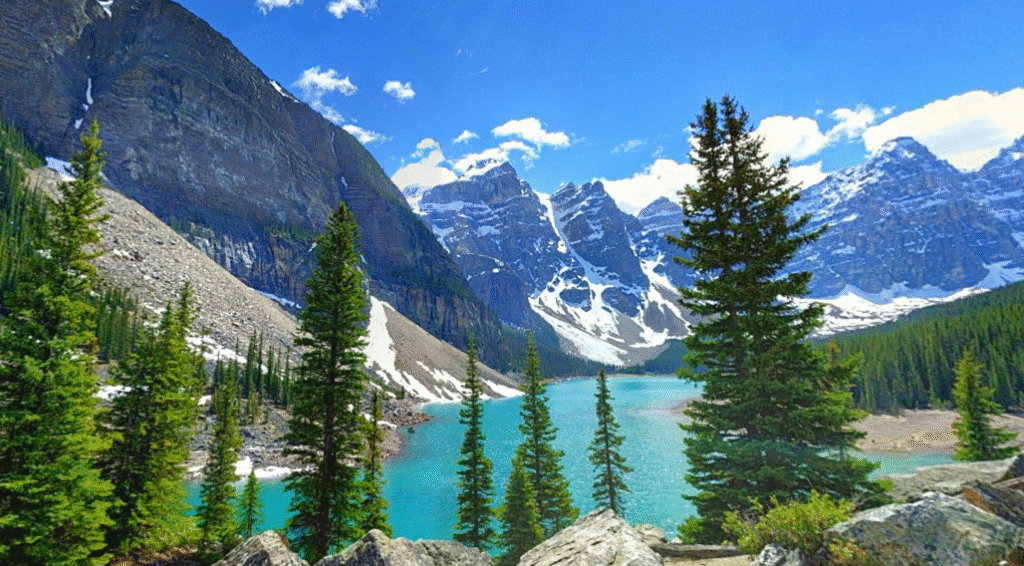
🌄 Moraine Lake
Set in the Valley of the Ten Peaks, Moraine Lake is less visited than Lake Louise but no less stunning. Its electric-blue hue is the result of glacial silt refracting sunlight. The best time to visit is at sunrise, when the alpenglow paints the peaks in shades of pink and gold. Short trails like the Rockpile Trail offer picture-perfect views, while longer hikes like Larch Valley and Sentinel Pass are perfect in late summer or fall.
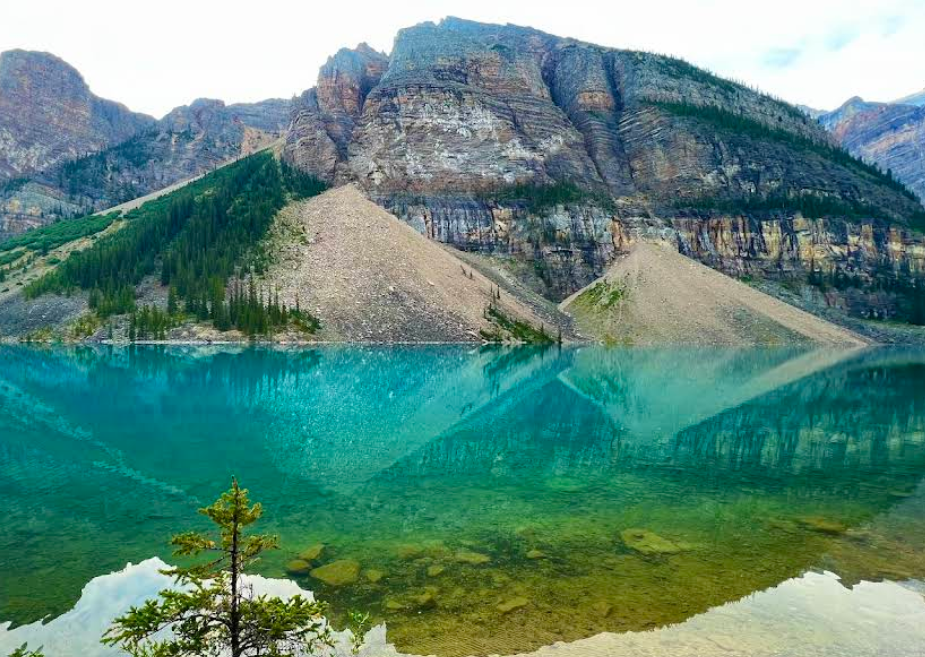
🚗 Icefields Parkway (Highway 93N)
Regarded as one of the most scenic drives in the world, this highway stretches 230 kilometers between Lake Louise and Jasper. Along the way, you’ll pass dramatic cliffs, hidden waterfalls, wildlife-rich meadows, and ancient glaciers. Key stops include Bow Lake, Peyto Lake (shaped like a wolf’s head!), and the massive Athabasca Glacier, which you can walk on with a guided tour or explore via the nearby Glacier Skywalk.
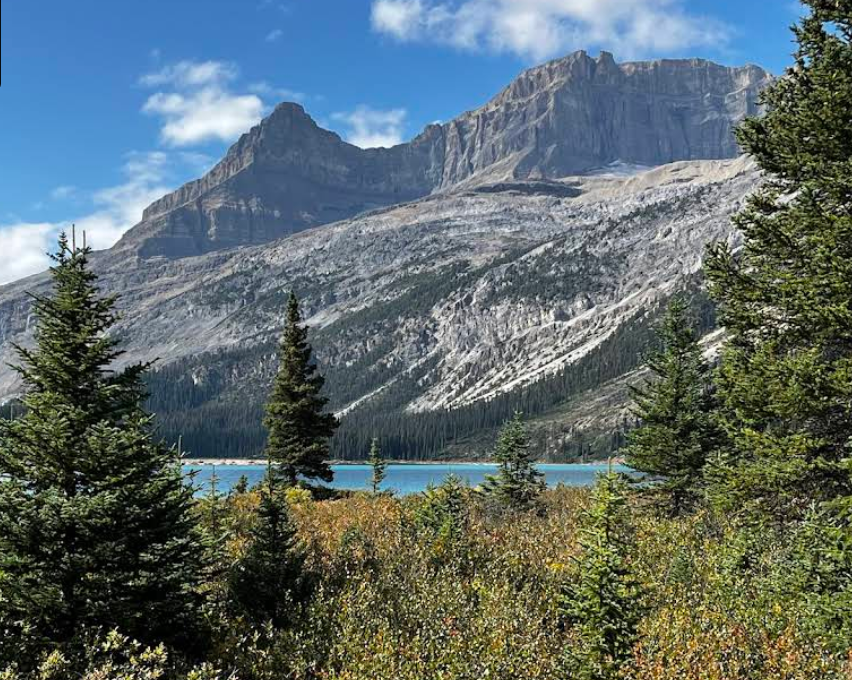
💧 Bow Lake
Often overshadowed by its more famous neighbors, Bow Lake is a peaceful gem with crystal-clear waters reflecting Crowfoot Glacier. It’s accessible right from the Icefields Parkway, making it a great stop for a picnic or light walk. Nearby trails include Bow Glacier Falls — a moderate hike that gets you close to the base of the glacier-fed falls.
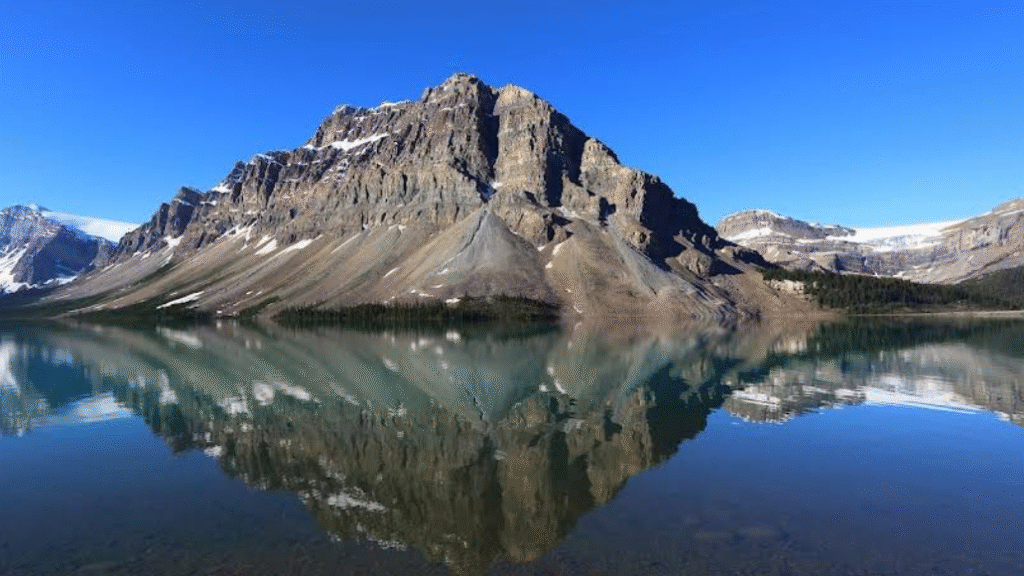
♨️ Banff Gondola & Upper Hot Springs
After a day of hiking or skiing, there’s nothing like soaking in the 38°C waters of the Banff Upper Hot Springs. Just next door is the Banff Gondola, which takes you up Sulphur Mountain in under 10 minutes. From the summit, enjoy panoramic views of six mountain ranges, the Bow Valley, and the town of Banff. Don’t miss the interpretive center and boardwalk to Sanson’s Peak Observatory.
🏕️ Top Campgrounds in Banff National Park
- Tunnel Mountain Campground – Close to town, has showers and RV hookups
- Two Jack Lakeside – Beautiful lake views, quiet and stargazer-friendly
- Lake Louise Campground – Secure with bear fence, steps from Lake Louise
- Johnston Canyon – Nestled in the woods with trails right from your tent
- Mosquito Creek – No-frills, rustic camping for real backcountry feels
🐻 Wildlife Tips & Safety
- Always carry bear spray, especially in early morning or dusk
- Stay 30 meters (100 feet) away from elk, moose, and deer
- Never feed wildlife — it can lead to animal euthanasia
- Use bear-proof lockers for all food and scented items
🌲 Leave No Trace in Banff
Help protect Banff’s fragile ecosystems by following these principles:
- Stick to designated trails
- Pack out all trash — even organic waste
- Don’t stack rocks or disturb wildlife
- Camp over 200 feet from water sources
- Use biodegradable soap far from streams
🏔️ Legend of Banff: The Sleeping Buffalo
Long before tourism and trains, the land we call Banff was rich with oral traditions passed down through generations of the Stoney Nakoda people. One such legend is that of the Sleeping Buffalo, a spirit guardian said to protect the valleys and rivers around what is now known as Lake Minnewanka.
According to the legend, there was once a great buffalo who roamed the land freely, guiding the animals and ensuring the balance of the natural world. One day, the buffalo laid down near the lake to rest and never rose again. Over time, his body became one with the mountain. If you look toward the horizon from certain vantage points around the lake, you can see the outline of a buffalo lying peacefully — head, hump, and tail clearly visible to those who know what to look for.
The mountain, now known as the Sleeping Buffalo, is said to awaken in spirit whenever the land is disrespected or harmed. Mist and fog that linger on the mountain are seen as signs of his watchful presence. In the past, Indigenous hunters would pause their expeditions if the mountain was shrouded in mist, believing it was a warning from the guardian spirit to wait.
This legend wasn’t just a story — it was a spiritual compass. The sleeping buffalo symbolized protection, wisdom, and the deep interconnectedness between humans and nature. Children were taught to recognize the shape and to honor it, while elders shared dreams they had of the spirit buffalo warning them of coming dangers or changes in the land.
Today, many who visit Lake Minnewanka report a feeling of stillness or reverence — even if they don’t know the story. Whether seen as myth or truth, the Sleeping Buffalo remains a powerful symbol of Banff’s sacred energy and enduring connection to the land’s original stewards.
✅ Final Tips Before You Go
Whether you’re visiting for a few days or planning a week-long road trip, keep these tips in mind:
- 🚗 Renting a car is essential to reach trailheads and quiet lakes
- 📅 Book campsites early, especially Lake Louise or Two Jack
- 📸 Plan photos at sunrise or golden hour for stunning lighting
- ❄️ Visiting in winter? Pack snow chains and dress in layers
- 🛍️ Stock up on essentials in Calgary — Banff is pricey for supplies
🏕️ Ready to Explore Banff?
From peaceful lakes to glacier hikes, Banff is an outdoor masterpiece. Its legacy as Canada’s first national park lives on not just in landscapes, but in the people who protect it, explore it, and fall in love with it.
If you’re chasing clean air, mountain highs, and spiritual peace in nature — Banff is waiting.
📬 Want more guides like this? Subscribe to Northern River Adventures for national park tips, outdoor gear, and campfire stories.
📌 Don’t forget to pin this post and share it with your adventure crew!
